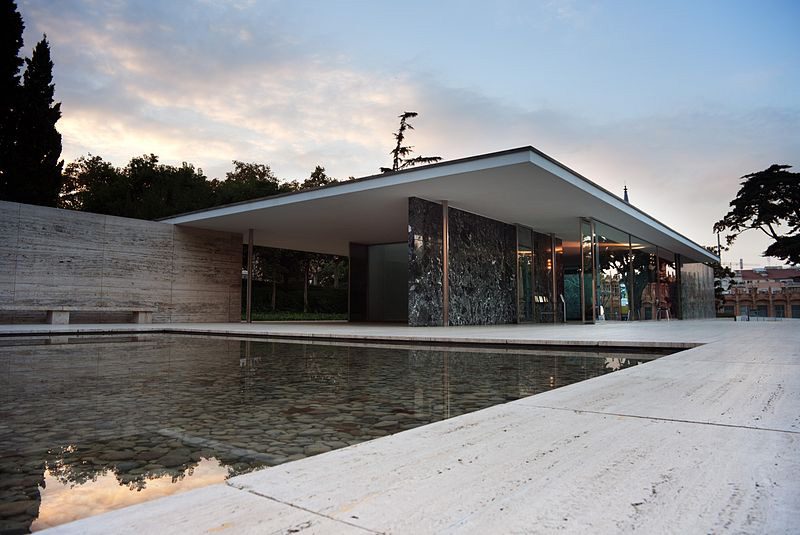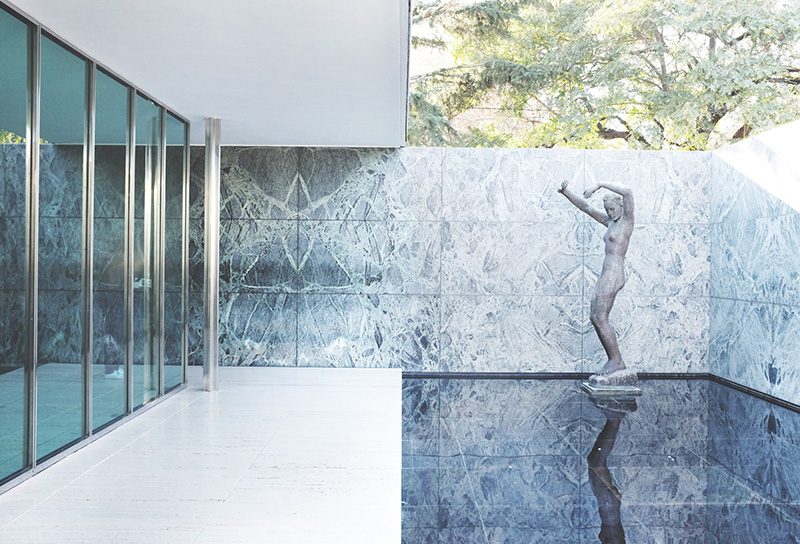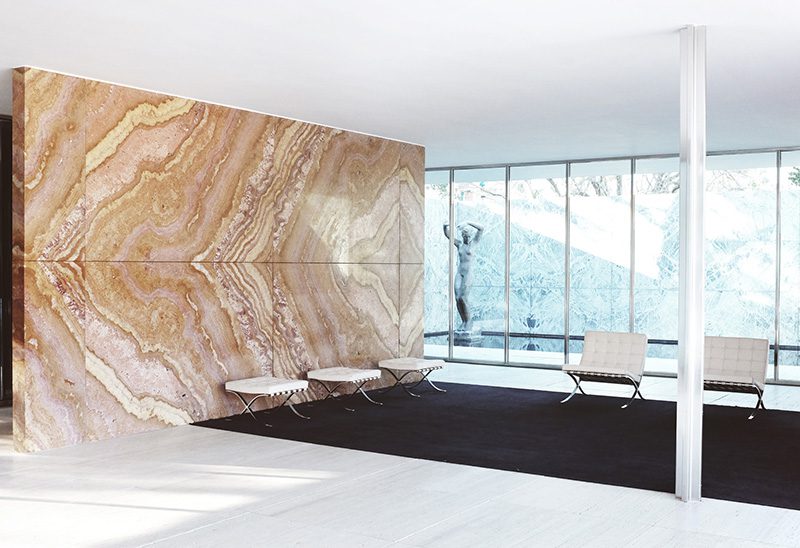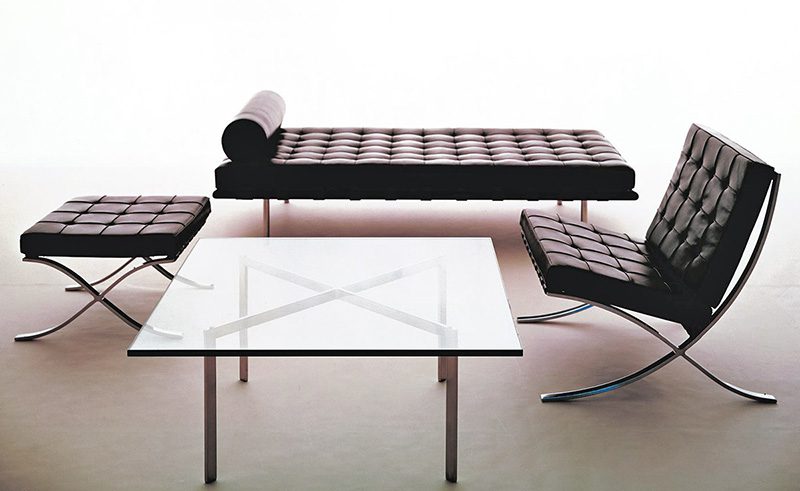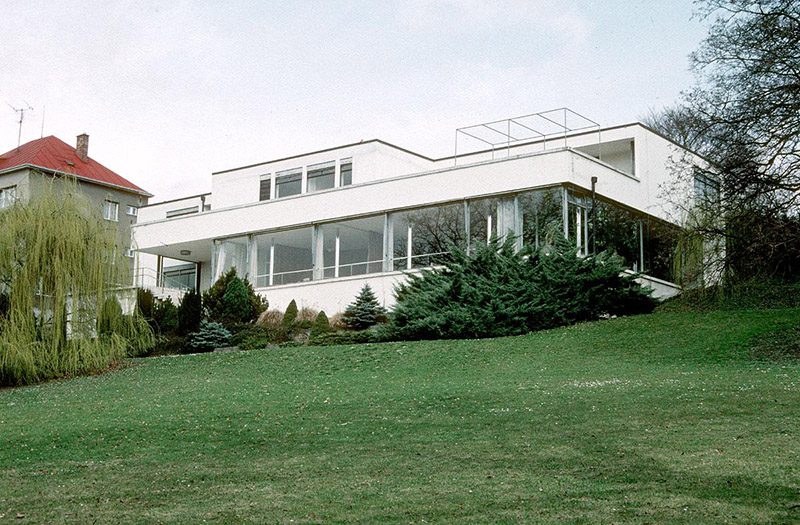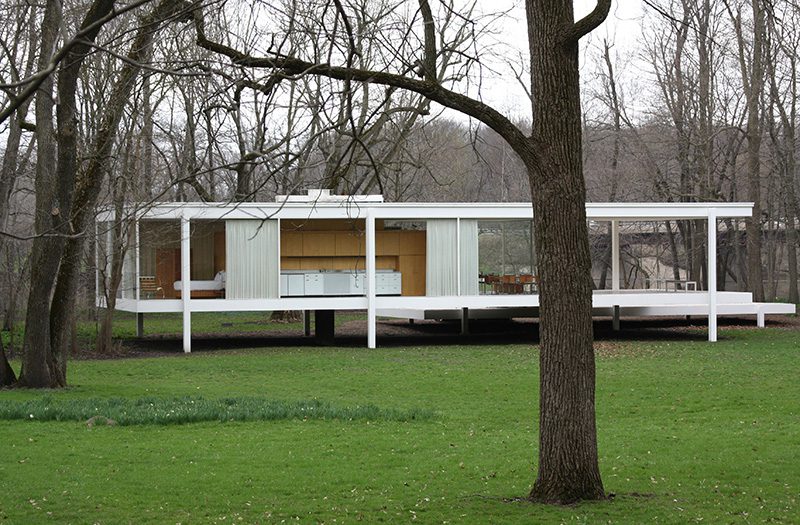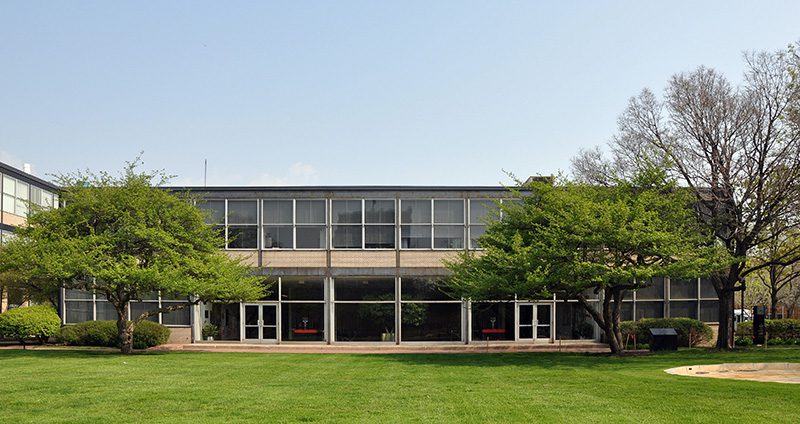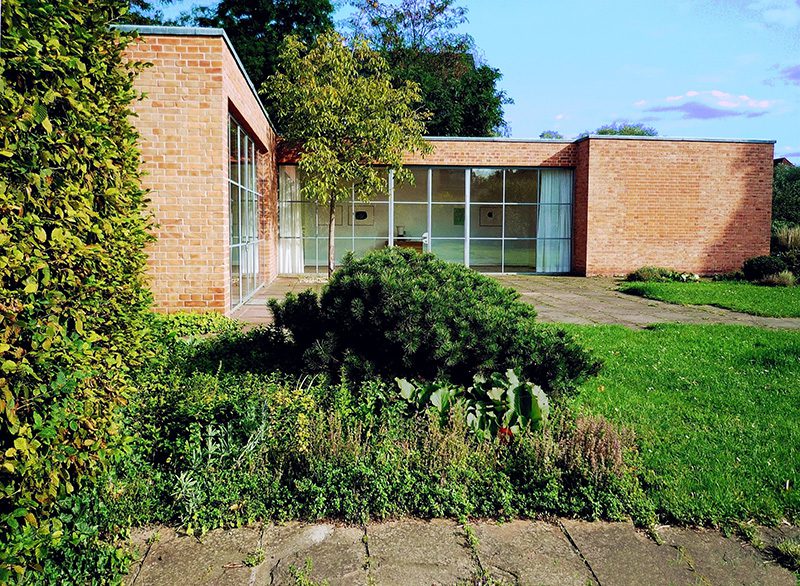ARCHITECTURE:Ludwig Mies van der Rohe
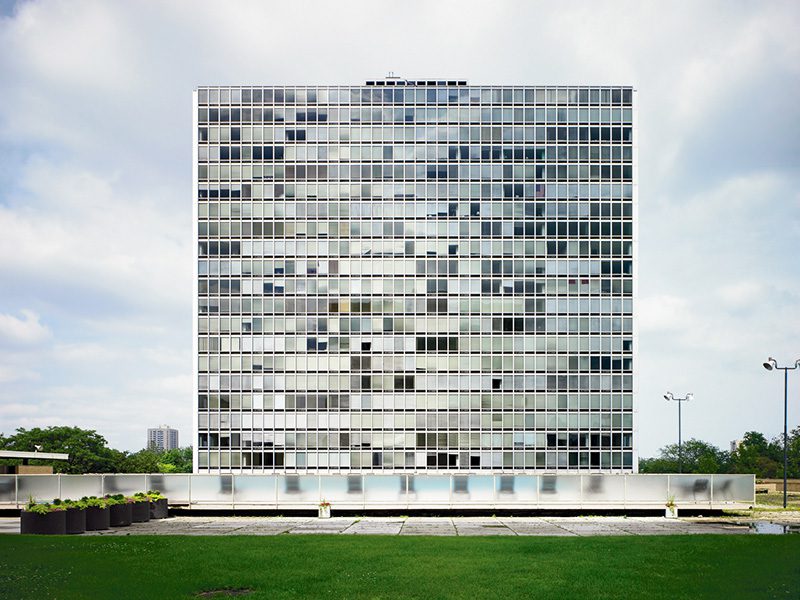 Ludwig Mies van der Rohe (27/3/1886-17/8/1969) is one of the most influential architects of the 20th Century, known for his role in the development of the most enduring architectural style of the era: Modernism. Born in Aachen, Germany, Mies’ career began in the influential studio of Peter Behrens, where Mies worked alongside other two titans of Modernism, Walter Gropius and Le Corbusier. For almost a Century, Mies’ Minimalist style has proved very popular, his famous quote “Less is more” is still widely used, even by those who are unaware of its origins.
Ludwig Mies van der Rohe (27/3/1886-17/8/1969) is one of the most influential architects of the 20th Century, known for his role in the development of the most enduring architectural style of the era: Modernism. Born in Aachen, Germany, Mies’ career began in the influential studio of Peter Behrens, where Mies worked alongside other two titans of Modernism, Walter Gropius and Le Corbusier. For almost a Century, Mies’ Minimalist style has proved very popular, his famous quote “Less is more” is still widely used, even by those who are unaware of its origins.
By Dimitris Lempesis
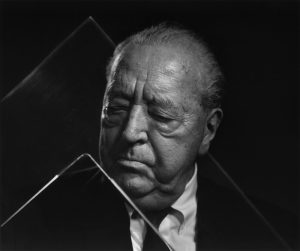 Born Maria Ludwig Michael Mies to a modest stonecutter’s family in Aachen, Germany, Mies until age 13 he attended Aachen’s cathedral school and then trade school. Three years with a firm of interior decorators refined his talent for freehand drawing, a short time in an architect’s office developed his drafting skills. Finding Aachen’s opportunities limited, Mies moved to Berlin, where, after two years’ further tutelage, including a period in the office of interior designer Bruno Paul, he designed the Riehl House, described as a work so faultless that no one would guess it was the first independent work of a young architect. Mies entered the office of Europe’s most influential architect, Peter Behrens, a pioneer of the Modernist school, and a founder of the Deutscher Werkbund. Behrens employed two other future leaders of Modern architecture, Walter Gropius and Le Corbusier. Mies’s architectural flair was quickly recognized he soon began to handle independent commissions, mostly private houses for Berlin’s cultural and business elite. He was also an exceptionally ambitious individual, and took advantage of his growing reputation to change his name adding the Dutch prefix “van der” plus his mother’s surname “Rohe”, to give himself the appearance of an aristocrat. During the early years of the Weimar Republic, Mies along with other avant-garde designers, searched hard for a new style of Modern architecture suitable for the “Modern Era”. Associated with the radical design magazine “G”, he became a founder of the architectural association Der Ring, and Director of Architecture with the German Work Federation, for whom he organized the important Weissenhof Estate prototype housing exhibition. Spurred on by this revolutionary quest, Mies van der Rohe showed off several designs which were so visionary as to place him at the forefront of Modern Architecture. His furniture designs, successfully applying the cantilever principle, produced the most enduring symbol of excellence the Barcelona chair. Other classic Mies designs include: the Barcelona table, the Brno chair, and the Tugendhat chair. In 1930 he was appointed to replace Hannes Meyer as director of the Bauhaus Design School, and in 1931 his European career reached its zenith with his election to the Prussian Academy. Mies’s attitude to building design was shaped by a number of schools of Avant-Garde Art which blossomed in the ‘20s, including: Bauhaus that was embodied by the works of Walter Gropius, the Dutch De Stijl group, Russian Constructivism, the design concepts of Adolf Loos who had worked alongside Louis Sullivan, a member of the first Chicago School of Architecture and the American Prairie Style building designs of Frank Lloyd Wright. Hitler’s assumption of power in 1933 made Mies’s position untenable. His Modernist style, deemed un-German by the authorities, could not compete with the imposing Totalitarian architecture being adopted by Albert Speer and others. During a 1937 visit to U.S.A, Mies was appointed director of architecture at the Armour Institute of Technology in Chicago. A major attraction of the new post was that Mies was commissioned to design many of the new IIT campus buildings, including the Chapel, the Alumni Hall, and his masterpiece the School of Architecture itself. It was also here that he introduced a new kind of education and design style, known as the Second Chicago School of Architecture, which became the dominant building style in America during the ‘50s and ‘60s. Mies designed and built a number of iconic buildings. At 860-880 and 900–910 Lake Shore Drive in Chicago, he produced the world’s first all-glass apartment buildings and in Piano, Illinois, the first all-glass residence the Farnsworth House. He designed the Seagram Building in collaboration with Philip Johnson,and as part of Detroit’s renewal his design for Lafayette Park demonstrated that urban life could combine the best of city and country living. Other important buildings designed by Mies van der Rohe include McCormick House, Elmhurst, Illinois, Cullinan and the Brown Pavilion for the Caroline Weiss Law Building at the Museum of Fine Arts in Houston, the Chicago Federal Center, Toronto-Dominion Bank Tower, the New National Gallery in Berlinand the IBM Building in New York. Over the last twenty years of his life, Mies developed and built his vision of a monumental “skin and bones” architecture that reflected his goal to provide the individual a place to fulfill himself in the Modern era. Mies sought to create free and open spaces, enclosed within a structural order with minimal presence. Mies van der Rohe died on 17/8/69.
Born Maria Ludwig Michael Mies to a modest stonecutter’s family in Aachen, Germany, Mies until age 13 he attended Aachen’s cathedral school and then trade school. Three years with a firm of interior decorators refined his talent for freehand drawing, a short time in an architect’s office developed his drafting skills. Finding Aachen’s opportunities limited, Mies moved to Berlin, where, after two years’ further tutelage, including a period in the office of interior designer Bruno Paul, he designed the Riehl House, described as a work so faultless that no one would guess it was the first independent work of a young architect. Mies entered the office of Europe’s most influential architect, Peter Behrens, a pioneer of the Modernist school, and a founder of the Deutscher Werkbund. Behrens employed two other future leaders of Modern architecture, Walter Gropius and Le Corbusier. Mies’s architectural flair was quickly recognized he soon began to handle independent commissions, mostly private houses for Berlin’s cultural and business elite. He was also an exceptionally ambitious individual, and took advantage of his growing reputation to change his name adding the Dutch prefix “van der” plus his mother’s surname “Rohe”, to give himself the appearance of an aristocrat. During the early years of the Weimar Republic, Mies along with other avant-garde designers, searched hard for a new style of Modern architecture suitable for the “Modern Era”. Associated with the radical design magazine “G”, he became a founder of the architectural association Der Ring, and Director of Architecture with the German Work Federation, for whom he organized the important Weissenhof Estate prototype housing exhibition. Spurred on by this revolutionary quest, Mies van der Rohe showed off several designs which were so visionary as to place him at the forefront of Modern Architecture. His furniture designs, successfully applying the cantilever principle, produced the most enduring symbol of excellence the Barcelona chair. Other classic Mies designs include: the Barcelona table, the Brno chair, and the Tugendhat chair. In 1930 he was appointed to replace Hannes Meyer as director of the Bauhaus Design School, and in 1931 his European career reached its zenith with his election to the Prussian Academy. Mies’s attitude to building design was shaped by a number of schools of Avant-Garde Art which blossomed in the ‘20s, including: Bauhaus that was embodied by the works of Walter Gropius, the Dutch De Stijl group, Russian Constructivism, the design concepts of Adolf Loos who had worked alongside Louis Sullivan, a member of the first Chicago School of Architecture and the American Prairie Style building designs of Frank Lloyd Wright. Hitler’s assumption of power in 1933 made Mies’s position untenable. His Modernist style, deemed un-German by the authorities, could not compete with the imposing Totalitarian architecture being adopted by Albert Speer and others. During a 1937 visit to U.S.A, Mies was appointed director of architecture at the Armour Institute of Technology in Chicago. A major attraction of the new post was that Mies was commissioned to design many of the new IIT campus buildings, including the Chapel, the Alumni Hall, and his masterpiece the School of Architecture itself. It was also here that he introduced a new kind of education and design style, known as the Second Chicago School of Architecture, which became the dominant building style in America during the ‘50s and ‘60s. Mies designed and built a number of iconic buildings. At 860-880 and 900–910 Lake Shore Drive in Chicago, he produced the world’s first all-glass apartment buildings and in Piano, Illinois, the first all-glass residence the Farnsworth House. He designed the Seagram Building in collaboration with Philip Johnson,and as part of Detroit’s renewal his design for Lafayette Park demonstrated that urban life could combine the best of city and country living. Other important buildings designed by Mies van der Rohe include McCormick House, Elmhurst, Illinois, Cullinan and the Brown Pavilion for the Caroline Weiss Law Building at the Museum of Fine Arts in Houston, the Chicago Federal Center, Toronto-Dominion Bank Tower, the New National Gallery in Berlinand the IBM Building in New York. Over the last twenty years of his life, Mies developed and built his vision of a monumental “skin and bones” architecture that reflected his goal to provide the individual a place to fulfill himself in the Modern era. Mies sought to create free and open spaces, enclosed within a structural order with minimal presence. Mies van der Rohe died on 17/8/69.


